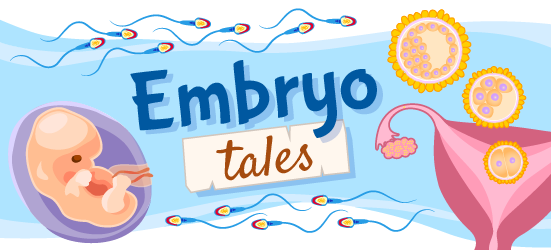
Helpful Sex Hormones
Illustrated by: Sabine Deviche
show/hide words to know
You go to a restaurant and look over the menu. Burgers, pizzas, tacos––it all sounds so good! Finally, the waiter comes around and it’s time to place an order: pizza it is. You tell the waiter your order, and they take it back to the kitchen and tell the cook. Once the cook knows what food you want, they can start making your pizza.

Messengers can help make things run smoothly, whether in a restaurant where you're ordering pizza, or in the human body. Image by Aline Ponce via Pixbay.
Wouldn’t it be easier if you just told the cook what you want yourself? Not really. The cook has lots of food to make, and not enough time to leave the kitchen or talk to every customer. That’s why the restaurant needs a specific messenger (the waiter) telling the cook what customers want.
Our cells also use messengers, called hormones, to talk to each other. Hormones are like messengers that travel to different cells and tell them what to do. Hormones attach, or bind, to the outside of certain cells to deliver their message. The cell that receives the message will then change what it’s doing based on the message.
The cell might make more of a product, stop making a product, or switch what product it’s making. That’s kind of like you placing, cancelling, or making a custom order at a restaurant.
There are special hormones in our bodies that help the body form sex characteristics. Those are called sex hormones. Sex hormones influence what body parts we develop and how we look.
Adding Androgen and Estrogen
When young people are around 12 to 15 years old, their bodies may start to change. They might suddenly get a few inches taller, start growing facial hair or have their first period. A lot of those changes are caused by sex hormones. Sex hormones affect the growth of many features related to our biological sex. That can include all sorts of things, from what body parts a person has, to a person’s bone structure and how much hair they have.

Androgens cause the growth of body hair around puberty in both sexes. Image by Wariot via Wikimedia Commons.
There are two main types of sex hormones needed to develop these features: androgens and estrogens. All people of all biological sexes have some androgens and estrogens in their bodies. But, a person develops more female or male features depending on how much of each kind of hormone they have.
Males usually have more androgens in their bodies than females do. Females usually have more estrogens. Still, there are lots of females who have high levels of androgens and males who have high levels of estrogens. Also, some people are intersex. Intersex people have a mix of male and female characteristics and can have varying levels of sex hormones.
Essential to Embryos
Sex hormones tell our cells to make products that trigger the growth of common male or female features. They play especially large roles during two points of a human life cycle: when we are embryos, and when we reach puberty. Let’s first look at when the embryo develops.
At that time, androgens signal cells in the embryo to begin forming male body parts. One type of androgen called testosterone is key for this. Testosterone tells the body when it’s time to grow male body parts like the penis and testicles as well as other male organs.
Estrogens are not as essential to the growth of female body parts, but they are still found in female embryos. That suggests estrogen might have a role in female development, but researchers are still studying what that role is.
Pushing Puberty Forward
The other time sex hormones are extra important is when we reach puberty at around 12 to 15 years old. Some people may reach puberty earlier or later than that as well. During puberty, we start to have higher levels of androgens and estrogens in our bodies. That causes a series of changes as we can begin to develop adult features.
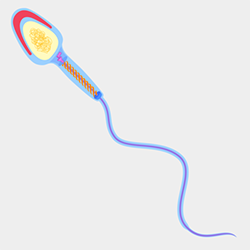
Changes to sex hormone levels during puberty are needed for males to start making sperm.
One important change for males during puberty is beginning to produce sperm. That happens because the testes produce more testosterone, which is needed to make sperm. Testosterone sends messages to other cells in the testes, telling them to divide to make sperm cells.
Female bodies may undergo a big change, too: they begin menstruating. Menstruation, or a period, is when women shed blood through their vaginas about every 28 days. Periods happen when the ovaries produce a certain level of estrogens. Those tell other cells in the uterus and ovaries when it's time to menstruate.
Our bodies also begin to grow secondary sex characteristics when we reach puberty. Those are characteristics related to our biological sex but that aren’t necessary to make offspring. For example, higher levels of androgens can cause humans to grow facial hair, have deeper voices, and broader shoulders. On the other hand, higher levels of estrogens can cause humans to develop breasts, higher voices, and wider hips.
Not everyone will develop the same based on their biological sex. Many females have broader shoulders or lower voices, and males can have higher voices or wider hips. Also, intersex people may have mixes of male and female characteristics. Our biological sex can influence how we look, but it does not define us.
Studying Sex Hormones
As humans, we have always had sex hormones in our bodies, but we haven’t always understood how they worked. People only started studying sex hormones in the last two hundred years.
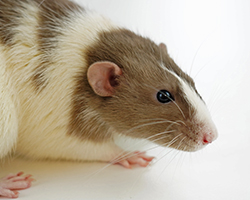
Rats helped scientists learn that testes made the hormone testosterone. Image by Alexandr Gusev via Unsplash.
German biologist Eugen Steinach was one of the first to study how sex hormones affect animals. In 1894, Steinach did experiments on rats in which he removed and reattached their testes. When Steinach removed the testes, he noticed that the behavior of the male rats changed. They became less aggressive and more nurturing. But when Steinach put the rats’ testes back in their bodies, their behavior changed back. Scientists didn’t know what sex hormones were in Steinach’s time. But, his studies showed that the testes made something that affected an animal’s behavior.
In 1912, Steinach continued studying hormones, but this time in guinea pigs. Steinach implanted testes in infant female guinea pigs and ovaries in infant male guinea pigs. Why do you think he would do that?
He wanted to see if the guinea pigs would grow differently with varied levels of hormones. The female guinea pigs with testes grew characteristics that males usually have. The male guinea pigs with ovaries grew characteristics that females usually have. That showed that hormones have a big impact on what sex characteristics an animal grows.
Considering Hormones in Cows
Other scientists in the US were also studying how hormones affect development at the same time as Steinach. In 1914, Frank Rattray Lillie began studying freemartins. Freemartins are cows that look female but were born with male organs inside their bodies. Lillie came up with a theory about why freemartins were born that way. The freemartins he studied had fully male twin brothers. So, Lillie thought the cows were genetically female, but were exposed to male sex hormones from their twins in the womb. That’s what made them grow male body parts.
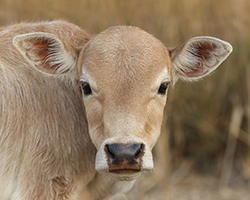
Experiments with cows were also very important to understanding what sex hormones do. Image by Basile Morin via Wikimedia Commons.
In the 1960s, scientists showed that Lillie was right, and that freemartins are in fact genetically female. In the 1980s, scientists found the exact androgen from the male twin that could make female cows grow into freemartins. It was the Anti-Müllerian Hormone.
Those studies showed that sex hormones have an impact on how an organism develops. Still, sex hormones do not solely decide what an animal's biological sex will be.
It's taken scientists a long time to learn the many ways sex hormones affect how humans and other animals develop. Even today, scientists still have a lot to learn about sex hormones, from how they are created in our bodies to what they tell our bodies to create.
This Embryo Tale was edited by Dina Ziganshina and Emily Santora and it is based on the following Embryo Project articles:
Drago, Mary, "Carl Richard Moore (1892-1955)". Embryo Project Encyclopedia (2014-02-18). ISSN: 1940-5030 https://embryo.asu.edu/handle/10776/7558.
Drago, Mary, “Frank Rattray Lillie’s Study of Freemartins (1914-1920)”. Embryo Project Encyclopedia (2014-03-14). ISSN: 1940-5030 https://embryo.asu.edu/handle/10776/7644.
Nunez-Eddy, Claudia and Federica Turriziani Colonna, “Eugen Steinach (1861-1944)”. Embryo Project Encyclopedia (2017-02-16). ISSN: 1940-5030 https://embryo.asu.edu/handle/10776/11419.
Van Iten, Brendan, “Estrogen and the Menstrual Cycle in Humans”. Embryo Project Encyclopedia (2016-06-22). ISSN: 1940-5030 https://embryo.asu.edu/handle/10776/11344.
Estradiol molecular model image by Jynto via Wikimedia Commons.
View Citation
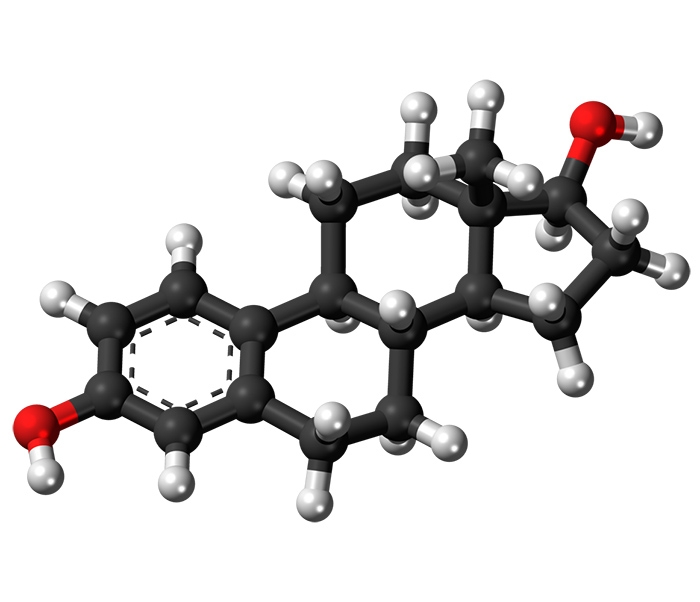
Be Part of
Ask A Biologist
By volunteering, or simply sending us feedback on the site. Scientists, teachers, writers, illustrators, and translators are all important to the program. If you are interested in helping with the website we have a Volunteers page to get the process started.






